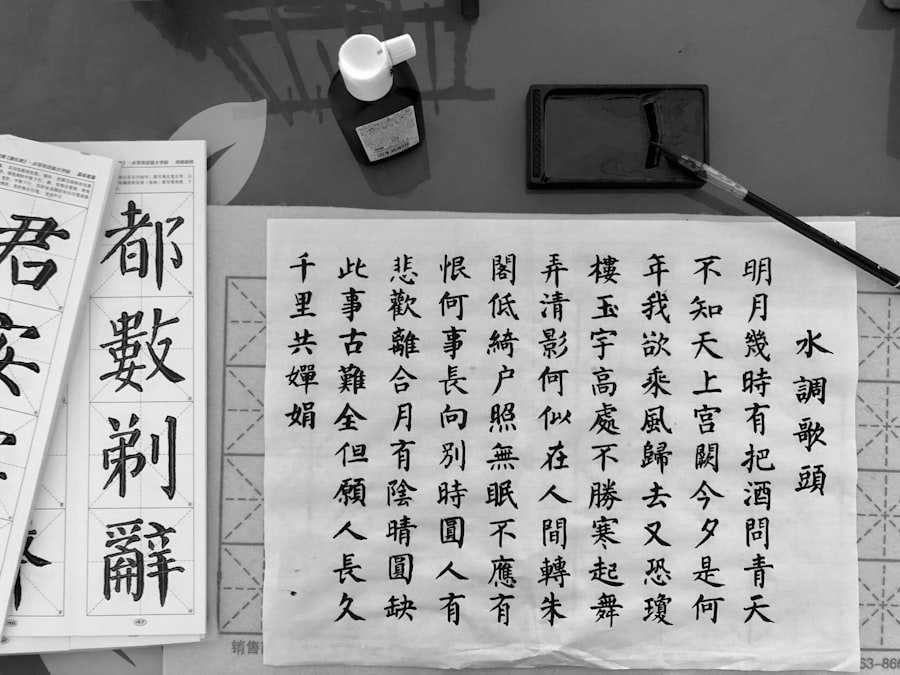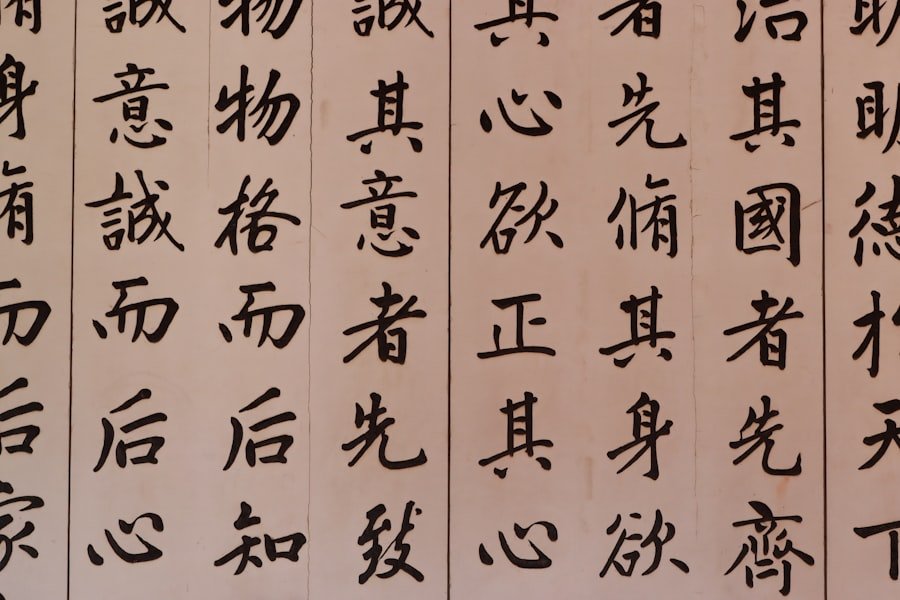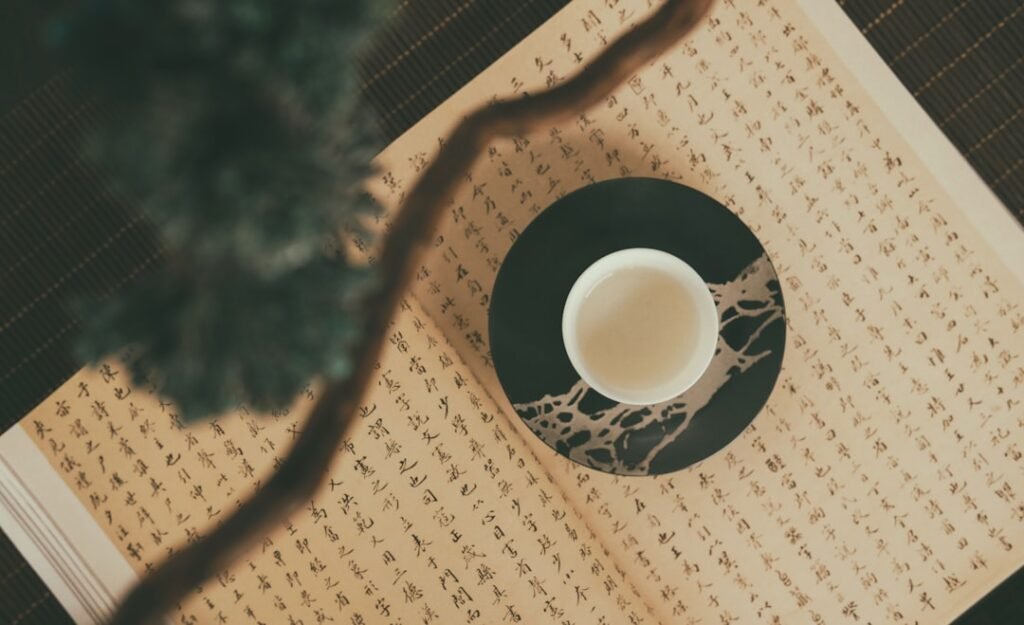Chinese calligraphy is not merely a form of writing; it is an intricate art that embodies the essence of Chinese culture and philosophy. This ancient practice, which dates back thousands of years, transforms the act of writing into a visual and spiritual experience. Each stroke of the brush is imbued with meaning, reflecting the character of the artist and the depth of the language itself.
The beauty of Chinese calligraphy lies in its ability to convey emotions and thoughts through the fluidity and rhythm of the brushstrokes, making it a unique form of artistic expression. At its core, Chinese calligraphy is a discipline that requires patience, precision, and a deep understanding of the principles that govern it. Practitioners often spend years honing their skills, learning to balance the elements of form and function.
The various styles, from the boldness of Kaishu (regular script) to the elegance of Xingshu (running script), offer a diverse palette for artists to explore. Each style has its own set of rules and aesthetics, allowing for personal interpretation while remaining rooted in tradition. This interplay between structure and creativity is what makes Chinese calligraphy a captivating art form. Master the art of Chinese calligraphy. Enroll now at the LC Chinese School in Oslo.
Table of Contents
ToggleSummary
- Chinese calligraphy is an art form that requires precision and skill in brushwork and composition.
- Moving meditation involves using the body and mind in harmony to achieve a state of calm and focus.
- Calligraphy and stillness are connected through the deliberate and mindful movements of the brush.
- Chinese calligraphy can provide physical benefits such as improved hand-eye coordination and mental benefits like stress reduction.
- Practicing stillness through calligraphy involves focusing on the present moment and letting go of distractions.
Understanding Moving Meditation
Moving meditation is a practice that combines physical movement with mindfulness, allowing individuals to cultivate a deeper awareness of their bodies and minds. Unlike traditional forms of meditation that often involve stillness, moving meditation encourages participants to engage in gentle, flowing movements that promote relaxation and focus. This approach can be particularly beneficial for those who find it challenging to sit still for extended periods, as it provides an alternative pathway to achieving a meditative state.
The essence of moving meditation lies in its ability to harmonise the body and mind. As practitioners engage in rhythmic movements, they become more attuned to their breath and bodily sensations. This heightened awareness fosters a sense of presence, enabling individuals to let go of distractions and immerse themselves in the moment.
Whether through Tai Chi, Qigong, or even dance, moving meditation offers a dynamic way to explore mindfulness, encouraging participants to connect with their inner selves while embracing the flow of life.
The Connection Between Calligraphy and Stillness

The practice of Chinese calligraphy is deeply intertwined with the concept of stillness. As artists prepare to create, they often enter a state of calmness that allows them to focus entirely on their brushwork. This stillness is not merely physical; it encompasses mental clarity and emotional balance as well.
In this serene state, practitioners can channel their thoughts and feelings into each stroke, transforming their inner landscape into a visual representation on paper. Moreover, the act of writing itself becomes a meditative process. Each brushstroke requires concentration and intention, drawing the artist’s attention away from external distractions and into the present moment.
This connection between calligraphy and stillness serves as a reminder that true artistry emerges from a place of tranquillity. By cultivating this stillness, practitioners can enhance their calligraphic skills while simultaneously nurturing their mental well-being.
The Physical and Mental Benefits of Chinese Calligraphy
Engaging in Chinese calligraphy offers numerous physical and mental benefits that extend beyond the realm of art. Physically, the practice promotes fine motor skills and hand-eye coordination as artists learn to control their brush movements with precision. The repetitive nature of calligraphy can also improve muscle memory, leading to greater dexterity over time.
Additionally, the act of writing can serve as a form of gentle exercise for the hands and wrists, helping to alleviate tension and promote relaxation. On a mental level, Chinese calligraphy fosters mindfulness and concentration. As practitioners immerse themselves in the rhythmic flow of brushwork, they cultivate a sense of presence that can alleviate stress and anxiety.
The focus required for each stroke encourages individuals to quiet their minds and let go of racing thoughts. This meditative aspect not only enhances creativity but also promotes emotional resilience, allowing practitioners to navigate life’s challenges with greater ease.
Techniques for Practicing Stillness Through Calligraphy
To fully embrace the stillness inherent in Chinese calligraphy, practitioners can employ various techniques that enhance their experience. One effective method is to create a dedicated space for practice—an environment free from distractions where one can focus solely on the art form. Setting up an inviting workspace with calming elements such as soft lighting or soothing music can help establish a peaceful atmosphere conducive to creativity.
Another technique involves incorporating breath awareness into the practice. Before beginning to write, practitioners can take a few moments to centre themselves by focusing on their breath. Inhaling deeply and exhaling slowly can help calm the mind and prepare it for the task ahead.
As they begin to write, maintaining awareness of their breath can further enhance their connection to the present moment, allowing each stroke to flow naturally from within.
Finding Inner Peace Through the Practice of Calligraphy

The journey into Chinese calligraphy can lead individuals towards profound inner peace. As practitioners engage with their brushes and ink, they often find themselves entering a state of flow—a harmonious alignment between body and mind where time seems to dissolve. In this space, worries and distractions fade away, leaving only the pure joy of creation.
The repetitive nature of brushwork can be soothing, providing a sense of rhythm that calms the spirit. Moreover, calligraphy serves as a form of self-expression that allows individuals to explore their emotions freely. Each stroke becomes an extension of one’s inner world, offering an outlet for feelings that may be difficult to articulate verbally.
This process not only fosters self-discovery but also cultivates acceptance and understanding of one’s emotions. Through this exploration, practitioners can uncover layers of inner peace that may have previously been obscured by the chaos of daily life.
Using Calligraphy as a Tool for Mindfulness
Chinese calligraphy is an exceptional tool for cultivating mindfulness—a practice that encourages individuals to be fully present in each moment without judgment. As artists engage with their brushes, they are invited to focus on the sensations of the ink gliding across paper, the sound of bristles against surface, and the visual beauty unfolding before them. This sensory engagement draws attention away from distractions and anchors practitioners in the here and now.
Incorporating mindfulness into calligraphy practice can also enhance creativity and artistic expression. By letting go of preconceived notions about perfection or outcome, artists can allow their intuition to guide them in each stroke. This freedom fosters a sense of playfulness that encourages exploration and experimentation—qualities essential for artistic growth.
Ultimately, using calligraphy as a tool for mindfulness not only enriches the artistic experience but also nurtures overall well-being.
Incorporating Chinese Calligraphy into Daily Meditation Practices
Integrating Chinese calligraphy into daily meditation practices can deepen one’s connection to both art and mindfulness. Setting aside dedicated time each day for calligraphic practice allows individuals to establish a routine that nurtures both creativity and inner peace. This commitment transforms calligraphy from an occasional activity into a meaningful ritual that enriches daily life.
To begin incorporating calligraphy into meditation practices, individuals can start with short sessions focused on specific characters or phrases that resonate with them personally. As they write these characters mindfully, they can reflect on their meanings and how they relate to their lives. This combination of artistic expression and introspection creates a powerful synergy that enhances both meditation and calligraphic skills over time.
The Spiritual and Cultural Significance of Calligraphy in Chinese Tradition
In Chinese culture, calligraphy holds profound spiritual significance that transcends mere aesthetics. It is often regarded as a reflection of one’s character and moral integrity; thus, mastering this art form is seen as a pathway towards personal growth and enlightenment. The practice is steeped in philosophical teachings that emphasise harmony between nature, humanity, and the cosmos—principles that resonate deeply within Chinese traditions.
Moreover, calligraphy is often associated with various spiritual practices such as Buddhism and Taoism. Many practitioners view it as a form of meditation that connects them with higher states of consciousness while fostering compassion and mindfulness in daily life. The act of writing becomes not just an artistic endeavour but also a spiritual journey—one that invites individuals to explore their inner landscapes while honouring centuries-old traditions.
Exploring the Harmony Between Body, Mind, and Spirit Through Calligraphy
The practice of Chinese calligraphy offers a unique opportunity to explore the harmony between body, mind, and spirit—a triad essential for holistic well-being. As practitioners engage in this art form, they cultivate awareness not only in their physical movements but also within their mental states and emotional landscapes. This interconnectedness fosters a sense of balance that transcends the act of writing itself.
Through mindful brushwork, individuals learn to listen to their bodies while expressing their thoughts and feelings on paper. This dialogue between body and mind creates an enriching experience where creativity flourishes alongside self-awareness. Ultimately, exploring this harmony through calligraphy allows practitioners to cultivate a deeper understanding of themselves while nurturing their connection to the world around them.
Tips for Beginners to Start Practicing Moving Meditation Through Chinese Calligraphy
For those new to moving meditation through Chinese calligraphy, starting this journey can be both exciting and daunting. One essential tip is to approach practice with an open mind—embracing imperfections as part of the learning process rather than obstacles to overcome. Allowing oneself to experiment freely with different styles and techniques fosters creativity while building confidence over time.
Additionally, beginners should consider setting realistic goals for their practice sessions—starting with short durations focused on specific characters or phrases before gradually increasing complexity as they become more comfortable with brushwork. Seeking guidance from experienced instructors or joining classes at institutions like LC Chinese School in Oslo can provide valuable insights into both technique and philosophy behind this beautiful art form. At LC Chinese School in Oslo, students have access to expert instructors who are passionate about sharing their knowledge of Chinese calligraphy while fostering an environment conducive to learning and growth.
The school’s courses are designed not only to teach technical skills but also to encourage students’ personal exploration within this rich tradition—making it an ideal place for beginners eager to embark on their journey into moving meditation through calligraphy. In conclusion, Chinese calligraphy is much more than an artistic pursuit; it is a profound practice that intertwines creativity with mindfulness, offering numerous benefits for both body and mind. By embracing this ancient art form as a means of moving meditation, individuals can cultivate inner peace while exploring their unique expressions within a rich cultural heritage—an experience beautifully supported by institutions like LC Chinese School in Oslo.
Master the art of Chinese calligraphy. Enroll now at the LC Chinese School in Oslo.







